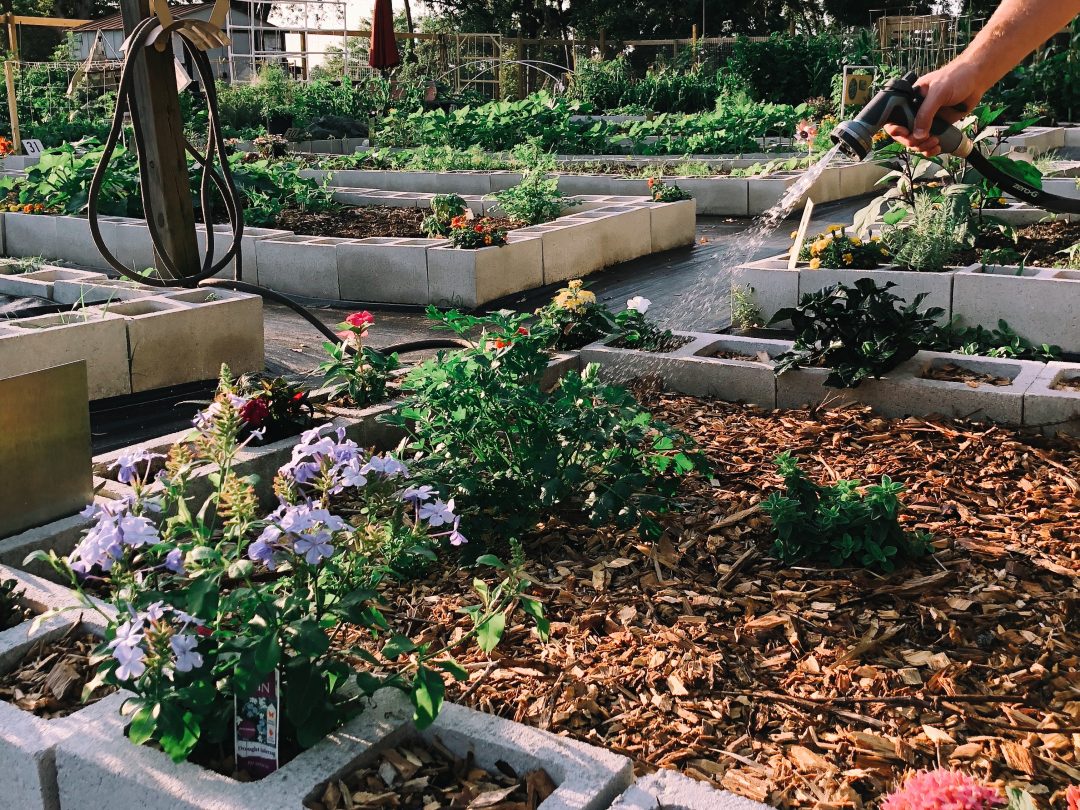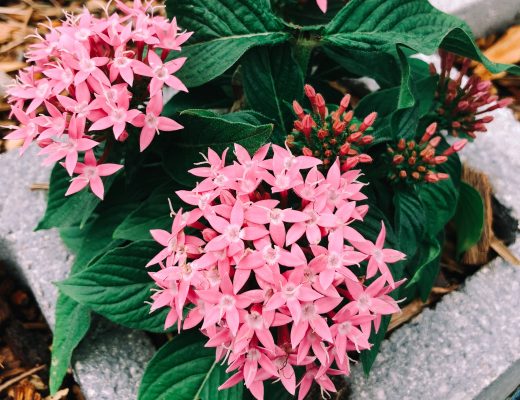About a year ago, Justin and I decided to try growing herbs in our apartment to use for cooking. We bought some shelves and hanging planters that would fit next to the large window in our living room. Unfortunately, that window faces south and doesn’t get a enough sun to grow the types of plants we were hoping.
We also planted succulents, which did a lot better than the herbs and actually survived the entire year. I had the idea to add them to our garden and now we have five cinder block holes filled with both new and old succulents.
All that to say, we’ve had an interest in gardening for quite some time. All it took was a bit a research and chance to actually turn the interest into a full-grown hobby. Keep reading to learn how our first days at the garden were spent!
How We Became Gardeners in 7 Steps
Step 1: Frantically email the garden’s president a rambling note about your interest in renting a plot late on a Saturday night.
If you haven’t already, read The Origin Story to learn how we stumbled into community gardening. Basically, my obsession with tiny houses caused us to accidentally fall in love with a British reality TV show about amateur gardeners, thus inspiring us to get off the couch and actually try gardening in real life.
Step 2: Anxiously wait for a reply while researching the best plants to grow in the Central Florida late spring and use Minecraft to plan your plot planting design.
I found the University of Florida’s Institute of Food and Agricultural Sciences (IFAS) extension website to be a great resource for learning about gardening. In particular, it puts out a monthly calendar on which vegetables to plant in that month depending on your region.
Based on this infographic and our veggie eating preferences, Justin and I decided to plant yellow squash, zucchini, spinach, green beans, swiss chard, and carrots. We also planned to grow spring herbs like parsley, basil, oregano, and thyme.
Another priority for us while gardening was attracting pollinators to the community garden by planting flowers along the perimeter of our plot. Again I used the IFAS extension website to learn which flowers thrive in full sun, humid environments. I settled on angelonias, pentas, zinnias, marigolds, purselanes, and (of course) milkweed.

It wasn’t until about a month later (mid-April) when we had a Master Gardener inspect our plot, that we found out carrots and spinach are better suited for planting in cooler months. She also pointed out that attracting butterflies also means inviting caterpillars and worms to our garden, which can (and did) do quite some damage to our tender vegetable sprouts. I guess you could call these (very basic) gardening lessons #1 & 2!

Step 3: Receive a reply instructing you to pay the $50 annual membership fee, download legal papers to print and sign, and meet the president at the garden the next afternoon.
The membership fee ensures that the potential plot renters are serious about their commitment to upkeep their gardens and helps cover the cost of the community resources like tools, water, and soil. Because the garden just rebuilt after experiencing damage from last year’s hurricanes, we were happy to pay the membership fee and pledge to keep the garden looking brand new.

Step 4: Hastily throw together a garden shopping list and fill your car with vegetable and herb plants, seeds, and flowers from a local nursery.
Having visited Lukas Nursery a couple of times before renting a garden plot, Justin and I knew we wanted to spend our hard-earned money at this local business. It was crowded that Sunday afternoon, but we found pretty much everything on our list and hit up the next door Home Depot for the remaining items.

If you live in Central Florida and have any interest in gardening, I highly suggest taking a trip to Lukas Nursery. The grounds are beautiful to just walk around in and it has a butterfly encounter where you can feed butterflies from your fingertips!

Step 5: Spend three hours filling your plot with a mixture of soil and manure after embarrassingly admitting to the president you wanted to get into gardening because of a British reality TV show.
We chose plot 10 because it was near a water hose station, yet far enough away from the front gate as to not be the first plot you see upon entering. Unfortunately, the plot was only about half full, so Justin and I spent the majority of our time shoveling soil and manure from the piles outside of the fenced-in garden into wheelbarrows and hauling them into our plot to be dumped.

The whole afternoon was hot, smelly, sweaty, dirty, and I loved every second of it!
Step 6: Take many, many photos because one day you might start a gardening blog.
Of course I had to take a few (well, a lot of) photos to commemorate our first day gardening.
While we were only able to plant eight flowers in the cinder blocks surrounding our plot, we decided to call it a day. That weekend was Daylight Savings time, so we were able to come back the next day after work to finish up planting the vegetables, herbs, flowers, and seeds.

Step 7: Oh, and absolutely fall in love with gardening.
That’s all it took.
Our vegetables, flowers, and herbs were transplanted and our seeds were set to germinate and sprout in a couple of weeks. We planned to visit and water the garden every other day, giving us something to look forward to after work.
And once we were done watering each night, we would walk amongst the other plots to find inspiration for our next crop.



